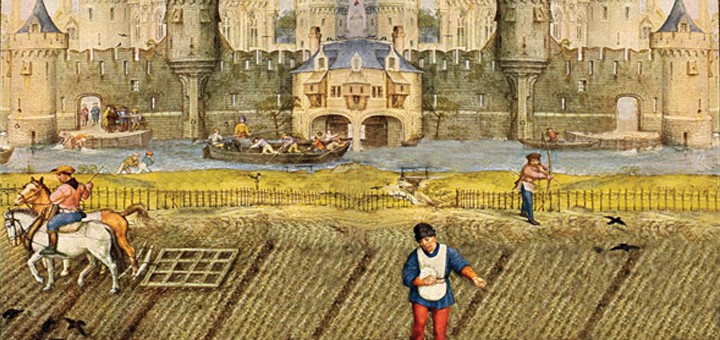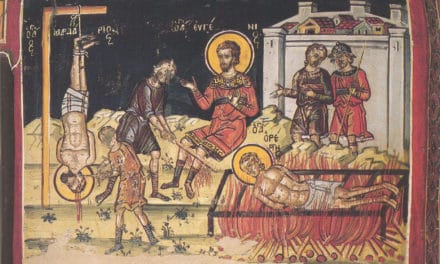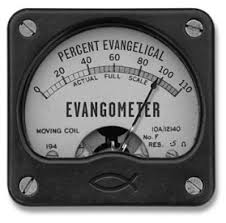Welcome to the 49th installment of CS. This episode is titled “Charlemagne Pt. 2.”
After his coronation on Christmas Day AD 800, Charlemagne said he didn’t know it had been planned by Pope Leo III. If setting the crown of a new Holy Roman Empire on his head was a surprise, he got over the shock right quick. He quickly shot off dispatches to the lands under his control to inform them he was large and in-charge. Each missive began with these words, “Charles, by the will of God, Roman Emperor, Augustus … in the year of our consulship 1.” He required an oath be taken to him as Caesar by all officers, whether religious or civil. He sent ambassadors to soothe the inevitable wrath of the Emperor in Constantinople.
What’s important to note is how his coronation ceremony in St. Peter’s demonstrated the still keen memory of the Roman Empire that survived in Europe. His quick emergence as the recognized leader of a large part of Europe revealed the strong desire there was to reestablish a political unity that had been absent from the region for 400 years. But, Charlemagne’s coronation launched a long-standing contest. One we’d not expect, since it was, after all, the Pope who crowned him. The contest was between the revived empire and the Roman Church.
In the medieval world, Church and State were two realms comprising Christendom. The Medieval Church represented Christian society aimed at acquiring spiritual blessings, while the Medieval State existed to safeguard civil justice and tranquility. Under the medieval system, both Church and State were supposed to exist side by side in a harmonious relationship, each focused on gaining the good of mankind but in different spheres; the spiritual and the civil.
In reality, it rarely worked that way. The Pope and Emperor were usually contestants in a game of thrones. The abiding question was: Does the Church rule the State, or the State the Church? This contest was played out on countless fields, large and small, throughout the Middle Ages.
Charlemagne left no doubt about where sovereignty lay during His reign. He provided Europe a colossal father figure as the first Holy Roman Emperor. Everyone was answerable to him. To solve the problem of supervising local officials in his expansive realm, Charlemagne passed an ordinance creating the missi dominici or king’s envoys. These were pairs of officials, a bishop and noble, who traveled the realm to check on local officials. Even the pope was kept under the watchful imperial eye.
Though Charlemagne occasionally used the title “emperor” in official documents, he usually declined it because it appeared to register his acceptance of what the Pope had done at his coronation. Charlemagne found this dangerous; that the Pope was now in a position to make an Emperor. The concern was—The one who can MAKE an emperor, can un-make him. Charles thought it ought to be the other way around; that Emperors selected and sanctioned Popes.
In truth, what Pope Leo III did on Christmas Day of 800 when he placed the crown on Charlemagne’s head was just a final flourish of what was already a well-established fact – Charles was King of the Franks. One recent lecturer described the coronation as the cherry on the top of a sundae that had already been made by Charles the Great.
In our last episode we saw a major objective of Charlemagne’s vision was to make Europe an intellectual center. He launched a revival of learning and the arts. Historians speak of this as the Carolingian Renaissance. Charlemagne required monasteries to have a school for the education of boys in grammar, math and singing. At his capital of Aachen he built a school for the education of the royal court. The famous English scholar Alcuin headed the school, and began the difficult task of reviving learning in the early Middle Ages by authoring the first textbooks in grammar, rhetoric, and logic.
It was Charlemagne’s emphasis on education that proved to be his enduring legacy to history. He sent out agents far and wide to secure every work of the classical age they could find. They returned to Aachen and the monastery schools where they were translated into Latin. This is why Latin became the language of scholarship in the ages to come. It was helped along by Charlemagne’s insistence a standard script be developed – Carolingian miniscule. Now, scholars all across Western Europe could read the same materials, because a consistent script was being used for Latin letters.
This became one of the most important elements in making the Renaissance possible.
Few historians deny Charlemagne’s massive impact on European history, and thereby, the history of the modern world. The center of western civilization shifted from the Mediterranean to Northern Europe. After 300 years of virtual chaos, Charles the Great restored a measure of law and order. His sponsorship of the intellectual arts laid a heritage of culture for future generations. And the imperial ideal he revived persisted as a political force in Europe until 1806, when the Holy Roman Empire was terminated by another self-styled emperor, Napoleon Bonaparte.
In reality, the peace of Charlemagne’s rule was short-lived. His empire were too vast, its nobility too powerful to be held together once his domineering personality was removed. Like Clovis before him, Charlemagne’s successors were weak and the empire disintegrated into a confusion of civil wars and new invasions. The Northmen began their incessant raiding forays, called going “a-viking” à So we know them as the Vikings. They set sail from Scandinavia in their shallow-hulled long ships, able to sail up rivers and deep inland, where they raided villages, towns and any other unfortunate hamlet they came on. These raids of the Vikings, forced the native peoples to surrender, first their lands, then their persons to the counts, dukes, and other local lords who began to multiply during this time, in return for protection from the raiders. It’s not difficult to see how the process of feudalism developed.
Common people needed protection from raiders; whoever they were. But the king and his army was a long way away. It could take weeks, months even, to send a message and get help in reply. In the meantime, the Vikings are right here; right now. See ‘em? Yeah à That blond, long-haired giant berserker with his 2 headed battle axe is about to crash through my door. What good is the king and his army in Aachen or Paris?
What I need is someone near with enough men at his call, enough trained and armed soldiers that is, who can turn away a long-ship’s crew of 50 berserkers. How expensive is it to hire, train, outfit and keep a group of soldiers; figure 2 for ever Viking? Who can field an army of a hundred professional soldiers? Well, the nearest Count is 20 minutes away and he only has a half dozen hired men for protection.
That count’s a smart guy though and realizes he’s the only one in the area to do what needs to be done. So he goes to 25 of the area’s farmers and says, “Listen, I’ll protect you. But to do that, I need to field an army of a hundred men. That’s very expensive to do so here’s what I need in exchange for protection: Give me the title to your land. You live on and continue to work it. You keep half the yield of all the farm produces; the rest is mine. And for that, I and my army will keep you safe.”
When the choice is either yield to that Count or face the long-ships on your own; there’s not much choice. So feudalism with its system of serfs, counts, barons, dukes, and earls began.
Central to feudalism was the personal bond between lord and vassals. In the ceremony known as the act of homage, the vassal knelt before his lord, and promised to be his “man.” In the oath of loyalty that followed, called fealty, the vassal swore on a Bible, or a sacred object such as a Cross. Then, in the ritual of investiture, a spear, a glove, or a bit of straw was handed to the vassal to signify his control, but not ownership, over his allotted piece of the lord’s realm.
The feudal contract between lord and vassal was sacred and binding on both parties. Breaking the tie was a major felony because it was the basic bond of medieval society. It was thought that to break the rules of feudal society was to imperil all of society, civilization itself.
The lord was obliged to give his vassals protection and justice. Vassals not only worked the land for the Lord, they also gave 40 days w/o pay each year to serve as militia in the event of all-out war. But only 40 days, because as farmers, they needed to be home to work their fields and tend the herds.
For the most part, this system worked pretty well, as long as the lord treated his vassals well. What became a problem was when lords got greedy and decided to mobilize their army and militia to make a land grab on a neighboring lord. Ideally, Feudalism was supposed to be for protection, not conquest.
As the Church was so much a part of medieval life, it couldn’t escape being included in the feudal system. Since the Vikings were equal opportunity raiders, they had no qualms whatever about breaking into churches, convents and monasteries, putting priests and monks to the sword, raping nuns, and absconding with church treasures. This meant the Church turned to local lords for protection as well. Bishops and abbots also became vassals, receiving from the lord a specific region over which their authority lay. In return, they had to provide some service to the Lord. Monasteries produced different goods which they paid as tribute, and priests were often made the special private clergy for the noble’s family. This became a problem when loyalty to the lord conflicted with a ruling from or mission assigned by the Church. Who were the abbots, priest and bishops to obey, the duke 10 minutes from here, or the Pope weeks away in Rome? In the 10th and early 11th Cs the popes were in no position to challenge anyone. The office fell into decay after becoming a prize sought by the Roman nobility.
What made the latter Middle Ages so complex was the massive intrigue that took place between Nobles and Church officials who learned how to play the feudal game. Society was governed by strict rules. But there were always ways to get around them. And when one couldn’t get around them, if you had enough money or a big enough army, why bother with rules when you can write your own, or pay the rule-interpreters to interpret them in your favor. We know how complex political maneuvering can be today. Compared to Europe of the High Middle Ages, we’re infants in a nursery. Don’t forget, it was that era and system that produced Machiavelli.
On a positive note; while there were a few corrupt Church officials who saw religious office as just another way to gain political power, most bishops, priests and abbots sought to influence for the better the behavior of the feudal nobles so their vassals would be taken care of in an ethical manner. In time, their work added the Christian virtues to a code of knightly conduct that came to be called Chivalry. Now, to be clear, chivalry ended up being more an ideal than a practice. A few knights and members of the nobility embraced the Chivalric ideals but others just took advantage of those who sought to live by them.
Knights in shining armor, riding off on dangerous quests to rescue fair maidens makes for fun stories, but it’s not the way Chivalry played out in history. It was an ideal the Church worked hard to instill in the increasingly brutal Feudal Age. Bishops tried to impose limitations on warfare. In the 11th C they inaugurated a couple initiatives called the Peace of God and the Truce of God. The Peace of God banned anyone who pillaged sacred places or refused to spare noncombatants from being able to participate at Communion or receiving any of the other sacraments. The Truce of God set up periods of time when no fighting was allowed. For instance, no combat could be conducted from sunset Wednesday to sunrise Monday and during other special seasons, such as Lent. Good ideas, but both rules were conveniently set aside when they worked contrary to some knights desires.
During the 11th C, the controversy between Church and State centered on the problem of what’s called Investiture. And this goes back now to something that had been in tension for centuries, and was renewed in the crowning of Charlemagne.
It was supposed to be that bishops and abbots were appointed to their office by the Church. Their spiritual authority was invested in them by a Church official. But because bishops and abbots had taken on certain feudal responsibilities, they were invested with civil authority by the local noble; sometimes by the king himself. Problems arose when a king refused to invest a bishop because said bishop was more interested in the Church’s cause than the king’s. He wanted someone more compliant to his agenda, while the Church wanted leaders who would look out for her interests. It was a constant game of brinkmanship, in which whatever institution held most influence, had the say in who lead the churches and monasteries. In places like Germany where the king was strong, bishops and abbots were his men. Where the Church had greater influence, it was the bishops and abbots who dominated political affairs.
But that was the controversy of the 11th C. The Church of the 10th could see the way things were headed in its affiliation with the Throne and knew it was not prepared to challenge kings and emperors. It needed to set its own house in order because things had slipped badly for a couple hundred years. Moral corruption had infected large portions of the clergy and learning had sunk to a low. Many of the clergy were illiterate and marked by grave superstitions. It was time for renewal and reform. This was led by the Benedictine order of Cluny, founded in 910. From their original monastery in Eastern France, the Benedictines exerted a powerful impulse of reform within the feudal Church. The Cluniac program began as monastic reform movement, but spread to the European Church as a whole. It enforced the celibacy of priests and abolished the purchase of church offices; a corrupt practice called Simony.
The goal of the Clunaic reformers was to free the Church from secular control and return it to the Pope’s authority. Nearly 300 monasteries were freed from control by the nobles, and in 1059 the papacy itself was delivered from secular interference. This came about by the creation of the College of Cardinals, which from then on selected the Pope.
The man who led the much-needed reform of the papacy was an arch-deacon named Hildebrand. He was elected pope in 1073 and given the title Gregory VII. He claimed more power for the papal office than had been known before and worked for the creation of a Christian Empire under the Pope’s control. Rather than equality between Church and State, Gregory said spiritual power was supreme and therefore trumped the temporal power of nobles and kings. In 1075 he banned investiture by civil officials and threatened to excommunicate anyone who performed it as well as any clergy who submitted to it. This was a virtual declaration of war on Europe’s rulers since most of them practiced lay investiture.
The climax to the struggle between Pope Gregory and Europe’s nobility took place in his clash with the emperor Henry IV. The pope accused Henry of Simony in appointing his own choice to be the archbishop of Milan. Gregory summoned Henry to Rome to explain his conduct. Henry refused to go but convened a synod of German bishops in 1076 that declared Gregory a usurper and unfit to be Pope. The synod declared, “Wherefore henceforth we renounce, now and for the future, all obedience to you.” In retaliation, Gregory excommunicated Henry and deposed him, absolving his subjects from their oaths of allegiance.
Now, remember how sacred and firm those feudal oaths between lord and vassal were! The Pope, who was supposed to be God’s representative on Earth, sent a message to all Henry’s subjects saying not only was Henry booted out of the Church, and so destined to the eternal flames of hell, he was no longer king or emperor; their bonds to him were dissolved. Furthermore, to continue to give allegiance to Henry was to defy the Pope who opens and closes the door to heaven. Uhh, do you really want to do that? Can you see where this is going? Henry may have an army, but that army has to eat and if the peasants and serfs won’t work, the army falls apart.
Henry was convinced by the German nobles who revolted against him to make peace with Pope Gregory. He appeared before the Pope in January of 1077. Dressed as a penitent, the emperor stood barefoot in the snow for 3 days and begged forgiveness until, in Gregory’s words “We loosed the chain of the anathema and at length received him … into the lap of the Holy Mother Church.”
This dramatic humiliation of an emperor did not forever end the contest between the throne and the pope. But the Church made progress toward freeing itself from interference by nobles. The problem of investiture was settled in 1122 by a compromise known as the Concordat of Worms. The Church kept the right to appoint the holder of a church office, then the nobles endorsed him.
The Popes who followed Gregory added little to the authority of the papacy. They also insisted society was organized under the pope as its visible head, and he was guarded against all possibility of error by the Apostle Peter perpetually-present in his successors.
During the Middle Ages, for the first time, Europe became conscious of itself as a unity. It was the Church that facilitated that identity. Though it struggled with the challenge of how to wield power without being corrupted by it, the Church gained a level of influence over the lives of men and women that for the most part it used to benefit society.
We’re used to seeing priests and bishops of the medieval era as modern literature and movies cast them. It’s far more interesting to make them out to be villains and scoundrels, instead of godly servants of Christ who lived virtuous lives. A survey of movies and novels written about the Middle Ages shows that churchmen are nearly always cast in 1 of 2 ways; the best are naïve but illiterate bumblers, while the worst are conniving criminals who hide their wickedness behind a cross. While there was certainly a handful of each of these 2 type-casts; the vast majority of priests and monks were simply godly lovers of Jesus who worked tirelessly to bring His love and truth to the people of their day. Guys like that just don’t make for very interesting characters in a murder mystery set in a medieval monastery.





